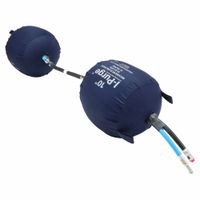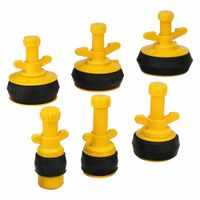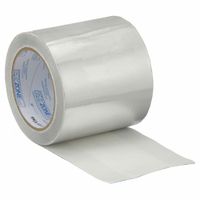Call +(254) 703 030 000 / 751 483 999 / 721 704 777
- Home
- Welding
- Weld Fixturing Marking Preparation
- Pipe Welding Layout Preparation Tools
- Pipe Purging Equipment
.....Read More
Frequently Asked Questions
What is pipe purging in welding?
Pipe purging in welding is a process used to protect the weld area from atmospheric gases, such as oxygen and nitrogen, which can cause defects in the weld. This is particularly important when welding materials like stainless steel, titanium, and other reactive metals that are prone to oxidation and contamination at high temperatures.
During pipe purging, an inert gas, typically argon or sometimes nitrogen, is introduced into the interior of the pipe to displace the air. This creates a protective environment that prevents oxidation and ensures a clean, high-quality weld. The purging process involves sealing the ends of the pipe and introducing the inert gas until the oxygen level is reduced to an acceptable level, usually below 0.1%.
There are several methods of pipe purging, including:
1. **Taping and Damming**: Using tape or inflatable dams to seal the pipe ends and create a chamber for the inert gas.
2. **Purge Plugs or Bladders**: Inserting specialized plugs or bladders that can be inflated to seal the pipe and allow for controlled gas flow.
3. **Continuous Flow**: Maintaining a constant flow of inert gas through the pipe to ensure a consistent protective atmosphere.
Proper purging is crucial for achieving high-quality welds, as it prevents issues such as porosity, discoloration, and reduced corrosion resistance. The purging process must be carefully controlled, with attention to gas flow rates, pressure, and the duration of purging to ensure optimal results.
Why is purging necessary for TIG welding stainless steel and aluminum?
Purging is essential in TIG welding stainless steel and aluminum to prevent oxidation and contamination, ensuring high-quality welds.
For stainless steel, purging removes oxygen from the weld area, preventing the formation of chromium oxides. These oxides can lead to reduced corrosion resistance and compromised mechanical properties. By using an inert gas like argon to purge the weld zone, the weld remains clean, maintaining the stainless steel's inherent corrosion-resistant properties and ensuring a smooth, defect-free weld.
In aluminum welding, purging is crucial to prevent the formation of aluminum oxides, which have a higher melting point than aluminum itself. These oxides can cause inclusions and porosity in the weld, leading to weak joints and potential failure. Purging with an inert gas helps maintain a clean weld pool, allowing for proper fusion and a strong, reliable weld.
Overall, purging ensures the integrity, strength, and longevity of the welds in both stainless steel and aluminum by creating an optimal environment free from contaminants.
How do oxygen purge monitors work?
Oxygen purge monitors are devices used to measure and control the concentration of oxygen in a given environment, typically during processes where inert gases are used to displace oxygen to prevent combustion or oxidation. These monitors work by employing sensors that detect the presence and concentration of oxygen in the atmosphere.
The most common type of sensor used in oxygen purge monitors is the electrochemical sensor. This sensor consists of an anode, a cathode, and an electrolyte. When oxygen molecules come into contact with the sensor, they undergo a chemical reaction that generates an electrical current. The magnitude of this current is directly proportional to the concentration of oxygen present, allowing the monitor to provide a precise measurement.
Another type of sensor used is the zirconia sensor, which operates based on the principle of oxygen ion conductivity. Zirconia sensors contain a ceramic element coated with a thin layer of platinum. When heated, the ceramic becomes conductive to oxygen ions. The difference in oxygen concentration between the reference gas (usually air) and the sample gas creates a voltage across the sensor, which is then used to determine the oxygen level.
Oxygen purge monitors are equipped with digital displays and alarms to alert operators when oxygen levels fall outside of predetermined safe ranges. They may also include data logging capabilities for process documentation and analysis.
These monitors are crucial in industries such as welding, chemical manufacturing, and food packaging, where maintaining low oxygen levels is essential for safety and product quality. By continuously monitoring oxygen levels, these devices help ensure that the purging process is effective and that the environment remains safe and controlled.
What are the benefits of using purge bladders?
Purge bladders offer several benefits in various industrial applications, particularly in welding and pipeline maintenance:
1. **Improved Weld Quality**: By creating an inert atmosphere, purge bladders prevent oxidation and contamination during welding, resulting in cleaner, stronger welds with reduced porosity and discoloration.
2. **Cost Efficiency**: They minimize the volume of inert gas required by isolating the weld area, leading to significant cost savings on gas consumption.
3. **Time Savings**: Quick setup and removal reduce downtime, allowing for faster project completion. The efficient purging process also shortens the time needed to achieve the desired atmosphere.
4. **Versatility**: Suitable for various pipe diameters and materials, purge bladders can be used in diverse applications, from small-scale projects to large industrial operations.
5. **Safety**: By reducing the amount of inert gas needed, purge bladders lower the risk of asphyxiation in confined spaces, enhancing worker safety.
6. **Environmental Impact**: Decreased gas usage leads to a smaller carbon footprint, making purge bladders an environmentally friendly option.
7. **Ease of Use**: Lightweight and easy to handle, they simplify the purging process, requiring minimal training and effort to operate effectively.
8. **Consistent Results**: They provide uniform gas coverage and pressure, ensuring consistent weld quality across different sections of the pipeline.
9. **Reduced Post-Weld Cleaning**: With less oxidation and contamination, the need for extensive post-weld cleaning is minimized, saving time and resources.
10. **Enhanced Productivity**: By streamlining the purging process and improving weld quality, purge bladders contribute to overall increased productivity in welding operations.
How do purge dams made of dissolvable paper work?
Purge dams made of dissolvable paper are used in welding processes, particularly for creating an inert gas environment when welding pipes. These dams are constructed from a water-soluble paper material that can be easily inserted into the pipe. Once in place, they are used to confine the inert gas, such as argon, to the weld zone, preventing oxidation and ensuring a high-quality weld.
The process begins by cutting the dissolvable paper to fit the internal diameter of the pipe. The paper is then shaped into a dam and positioned at a suitable distance from the weld area. Typically, two dams are used: one on each side of the weld zone. The space between the dams is then purged with inert gas, displacing the air and creating a controlled atmosphere.
The key feature of these purge dams is their solubility in water. After the welding is completed, the dams can be easily removed by flushing the pipe with water. The paper dissolves completely, leaving no residue, which is particularly advantageous in applications where cleanliness and the absence of contaminants are critical.
This method is efficient and cost-effective, as it eliminates the need for more complex and reusable purge systems. It also reduces setup time and labor costs, as the paper dams are lightweight and easy to install. Additionally, the use of dissolvable paper minimizes the risk of contamination, as the material is non-toxic and environmentally friendly.
What is the purpose of purge gas retaining tape?
Purge gas retaining tape is used in welding processes, particularly in applications involving stainless steel and other high-alloy materials, to ensure the quality and integrity of the weld. Its primary purpose is to create a sealed environment that retains the inert purge gas, such as argon or nitrogen, within the weld area. This is crucial for preventing oxidation and contamination during the welding process.
When welding, especially in pipework or tubing, the inside of the weld joint must be protected from atmospheric gases like oxygen and nitrogen, which can cause defects such as porosity, discoloration, and reduced corrosion resistance. The purge gas retaining tape helps maintain a stable and controlled atmosphere by sealing off the area around the weld, ensuring that the purge gas remains in place and effectively displaces any unwanted gases.
The tape is typically heat-resistant and adhesive, allowing it to withstand the high temperatures of welding without losing its sealing properties. It is applied around the joint or the area to be welded, creating a barrier that holds the purge gas in place until the welding is complete and the joint has cooled sufficiently.
In summary, the purpose of purge gas retaining tape is to enhance weld quality by maintaining an inert atmosphere, preventing oxidation, and ensuring the mechanical and chemical properties of the weld are preserved. This is particularly important in industries where weld integrity is critical, such as aerospace, pharmaceuticals, and food processing.
How do purge plugs function in sealing small diameter pipes?
Purge plugs are used in welding applications to seal small diameter pipes and create an inert gas environment, typically with argon, to prevent oxidation and contamination during the welding process. They function by being inserted into the ends of the pipe, effectively sealing the interior space. Once in place, the purge plug allows for the introduction of an inert gas, which displaces the air and any reactive gases inside the pipe.
The purge plug typically consists of a rubber or silicone body that can expand to fit snugly within the pipe's diameter, ensuring a tight seal. This expansion is often achieved through mechanical means, such as a screw mechanism or an inflatable bladder, which presses the plug against the pipe walls. The plug is designed to withstand the pressure of the inert gas being introduced, maintaining the seal throughout the welding process.
Once the plug is secured, the inert gas is introduced through a valve or port in the plug. The gas flows into the pipe, pushing out the air and creating a controlled atmosphere that prevents oxidation of the weld area. This is crucial for achieving high-quality welds, especially in materials like stainless steel or titanium, which are prone to oxidation.
After the welding is completed, the purge plug can be deflated or retracted, allowing for easy removal. The use of purge plugs is essential in industries where the integrity of the weld is critical, such as in aerospace, pharmaceuticals, and food processing, ensuring that the internal surfaces of the pipe remain uncontaminated and structurally sound.





